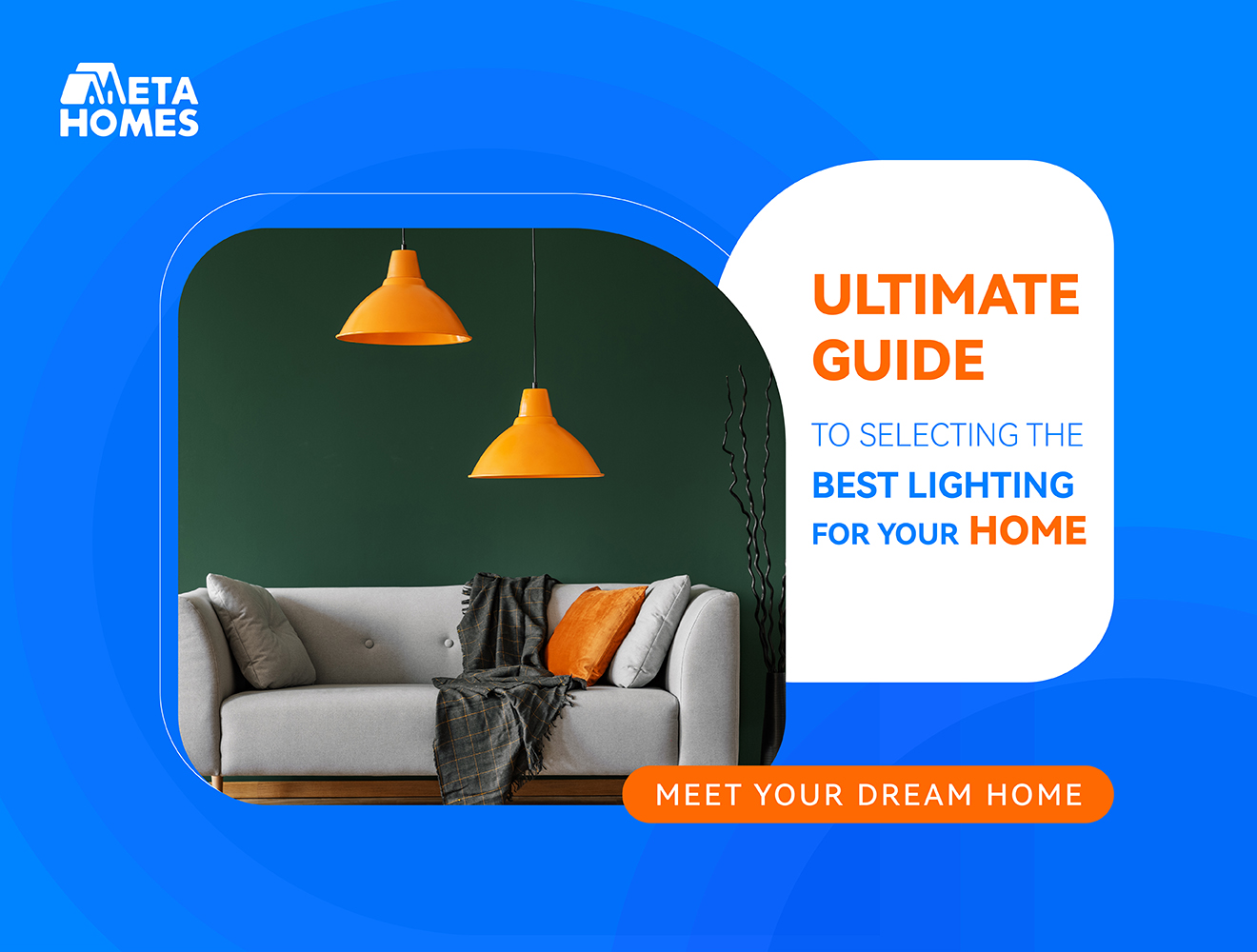
Lighting is one of the most important elements of design, often overlooked but has a big impact. The right lighting can change a room, set the mood, highlight your home’s best features, and even your productivity and overall well-being.
Remember lighting your home doesn’t mean you have to brighten all the spaces. It’s just creating an ambiance that matches your lifestyle and fashion.
Having that in mind, it’s therefore crucial to understand how the different types of lighting—ambient, task, and accent—work together to give you functionality and style.
How to choose the right fixtures, bulbs, and placement to get the desired effect. And how to use lighting to enhance the architectural features of your home and make it not just a place to live but a place to thrive—the place you always wanted to have.
Of course, there are always plenty of options to choose from, so making the right choice can be stressful most of the time. But we have covered it all, ensuring that each room not only looks good but feels just right.
For more inspiration on finding the perfect home with excellent lighting options, check out MetaHomes, a leading real estate portal in UAE that offers various properties for rent and sale.
Why Lighting Matters in Home Design
Lighting plays a pivotal role in home design, affecting how spaces look and feel. It can make a room appear larger or more friendly, highlight architectural features, and create specific atmospheres.
Good lighting always needs you to find a balance between function and style. Proper lighting can improve your quality of life by enhancing visibility, reducing eye strain, and creating an inviting environment.
Understanding the Lighting Types
There are basically three types of lighting. These include ambient, task, and accent lighting. Each serves a different purpose and should be used together to create a well-lit functional space.
-
Ambient Lighting: The Foundation
Ambient lighting creates the overall tone of a room while providing enough light for everyday activities. Examples include ceiling fixtures, chandeliers, and wall-mounted fixtures.
-
Task Lighting: Enhancing Functionality
As the name suggests, task lighting is focused on specific areas to help you do activities like reading, cooking, or working. Examples are desk lamps, under cabinet lighting, and pendant lights over kitchen islands. Task lighting should be bright and glare-free to reduce eye strain.
-
Accent Lighting: Adding Interest and Depth
Accent lighting adds drama and visual interest to a room by highlighting certain objects or architectural features. Examples are track lighting, wall sconces, and recessed spotlights. This type of lighting is used to draw attention to artwork, plants, or textured walls and adds depth and dimension to your home’s decor.
Room-By-Room Lighting Solution
Each room in your home has different lighting needs based on its function and layout. Here’s a room-by-room guide to help you choose:
-
Living Room: Creating a Versatile Atmosphere
This is the most versatile space in the house, used for relaxing, entertaining, and socializing. Layer different types of lighting to accommodate various activities, from relaxing to entertaining.
Start with a central fixture for ambient light like a chandelier or a ceiling fan with lights. Add floor lamps and table lamps for task lighting or recessed lighting for accent lighting.
-
Kitchen: Bright and Efficient
Combine ambient and task lighting to ensure a well-lit cooking area. Combine ambient lighting like recessed ceiling lights with task lighting like under-cabinet lights and pendant lights over the island. Accent lighting can be used to highlight cabinets or open shelving.
-
Dining Room: Setting the Mood
The dining room should have a warm and inviting atmosphere with the right balance of ambient and accent lighting. A chandelier or pendant light centered over the dining table as a focal point and general lighting. Dimmers are also very useful for creating different moods, from bright for meals to soft for intimate dinners.
-
Bedroom: Relaxation and Comfort
The bedroom should have a relaxing and an inviting atmosphere. It is recommended to use a combination of ambient lighting from ceiling fixtures, task lighting from bedside lamps and accent lighting from wall sconces or LED strip lights behind the headboard.
-
Bathroom: Bright and Practical
Ensure good visibility for grooming tasks with a combination of overhead and task lighting around mirrors. Waterproof fixtures are a must in this wet area.
-
Home Office: Boosting Productivity
Proper lighting in your home office can boost productivity and reduce eye strain. Recommended to use bright ambient lighting with task lighting like a desk lamp with adjustable brightness and direction.
-
Outdoor Spaces: Safety and Aesthetics
Outdoor lighting is used for security purposes and can add a touch of style and fashion to the home’s exterior as well
Use wall-mounted fixtures, ceiling lights, or post lights for general lighting in outdoor areas. Solar-powered lights are an eco-friendly option.
Motion sensor lights are great for paths and driveways. Accent lighting can highlight landscaping, trees or architectural features. Always use spotlights, string lights, or lanterns to create a warm outdoor space.
Selecting the Right Bulbs for Your Home
The type of bulb you choose can significantly impact the quality of light and the mood of a room. Here are some common options:
-
LED Bulbs: Energy-Efficient and Versatile
LED bulbs are energy-saving and long-lasting, available in various color temperatures from warm to cool. Suitable for all types of lighting and can save you money on your energy bills.
-
Incandescent Bulbs: Warm and Classic
Incandescent bulbs provide warm natural light but are less energy efficient and have shorter lifespan. Used for ambient lighting and in fixtures where the bulb is visible.
-
Halogen Bulbs: Bright and Efficient
Halogen bulbs are a type of incandescent bulb that is more energy efficient and produces bright white light. It’s used for accent and task lighting.
-
CFL Bulbs: Energy-Saving Alternatives
CFL bulbs are energy-saving and long-lasting, and they are available in various color temperatures. However, they contain a small amount of mercury, so they must be disposed of properly.
Understanding Color Temperature
Color temperature is measured in Kelvins (K) and affects the mood of a room:
Warm White (2700K-3000K)
Warm white creates an active atmosphere. Suitable for living rooms, bedrooms, and dining rooms. Warm white is similar to incandescent light.
Cool White (3500K-4100K)
High and clean. Suitable for kitchens, bathrooms, and workspaces. It creates a more energetic atmosphere and is great for areas where tasks are done.
Daylight (5000K-6500K)
This type is almost like natural daylight. It is perfect for reading areas, garages, and detailed work. Daylight bulbs are great for areas where you need to stay alert.
Tips for Effective Lighting Design for Your Home
-
Plan Your Layout: Consider the function and layout of each room when choosing lighting fixtures.
-
Layer Your Lighting: Combine ambient, task, and accent lighting for a balanced and functional space.
-
Adjust as Needed: Use dimmers and adjustable fixtures to adapt lighting to different activities and moods.
-
Highlight Features: Use accent lighting to draw attention to architectural details and decorative elements.



Leave a Reply